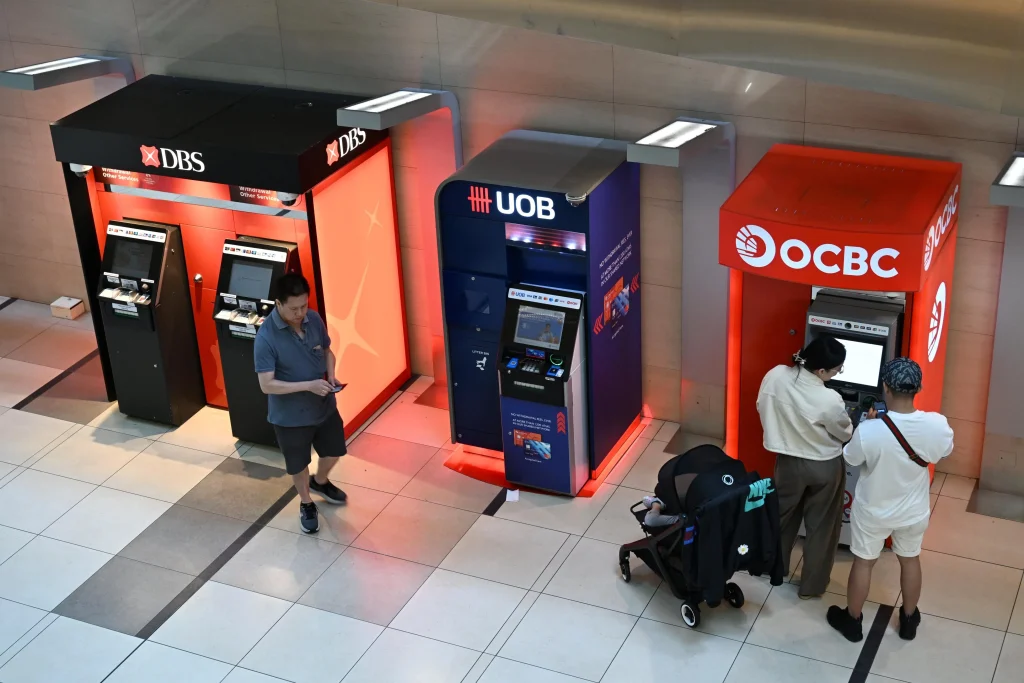[SINGAPORE] Singapore banks may cut their earnings guidance for 2025, as uncertainty in the macroeconomic outlook weighs on their growth prospects for the year, analysts said.
While the local lenders will likely continue to post resilient results for the first quarter of 2025, analysts noted a lack of clarity ahead. Several downgraded the sector ahead of the release of their results.
The Singapore banks are due to report their first quarter results this week – beginning with UOB on Wednesday (May 7), then DBS on May 8, and finally, OCBC on May 9.
IG market strategist Yeap Jun Rong noted that loan momentum remained resilient in Q1, which could help offset some of the pressure from narrowing net interest margins (NIMs) as a result of 2024’s rate cuts.
BT in your inbox

Start and end each day with the latest news stories and analyses delivered straight to your inbox.
But Yeap also expects the banks to post a broad-based increase in loan loss provisions in the quarter.
This reflects the banks’ prudence in preparing for heightened uncertainties stemming from Trump’s tariffs, which may directly pressure the banks’ earnings, he said.
In fact, DBS Group Research analyst Lim Rui Wen thinks the strong earnings in Q1 could set the stage for further provision overlays in anticipation of slower economic growth.
Furthermore, the Jefferies analysts said DBS and UOB could dial back on their NIM guidance – given that they made only one to two cuts in prior projections – while all the banks will likely have to trim loan growth targets.
According to the RHB Singapore research team, the risks from slowing global growth are mainly in operating income.
Loan demand will likely be hit by weaker export demand, slower economic activities, and as companies adopt a “wait-and-see” stance on capex and investment decisions, the team said.
This would be negative for NIM and net interest income, especially given the fall in benchmark rates, it added.
In an Apr 21 report, RHB lowered its call on the sector to “neutral” from “overweight”, after it downgraded its calls on OCBC and UOB to “neutral” from “buy”. It maintains a “buy” call on DBS.
Capital returns and share prices
Citi analyst Tan Yong Hong said Q1 will likely “somewhat reaffirm banks’ commitment for capital return”.
But the banks could take another quarter to assess the secondary impact from tariffs, before providing clearer earnings guidance.
“As such, while we expect banks to outperform into the results announcements from near-record earnings, the sector could trade sideways with global macro uncertainties weighing on sentiments,” he said.
Meanwhile, DBS’ Lim said the banks’ share prices have likely peaked.
“While FY2025 dividends remain intact, the backdrop of slower global growth and trade war rhetoric does not support an overweight position in the banking sector,” she said.
Where concerns of recession or slowing growth arising from trade war are aplenty, banks’ share prices tend to trade nearer to book, and a downside of 10 to 25 per cent is plausible, she added.
The RHB research team also said a potential downside of 20 per cent is possible if conditions worsen, based on historical trends such as in 2011’s euro debt crisis, 2015’s commodity price crash, and 2020’s Covid-19 pandemic.
Nevertheless, the impact could be cushioned if the banks continue to dish out dividends and return capital to shareholders, the team said.
IG’s Yeap expects market participants will be watching closely for reassurances that the banks remain confident in their business resilience, given the optimistic tone sustained in recent quarters.
At the close on Friday, DBS was up 0.6 per cent to S$42.70, OCBC was up 0.1 per cent to S$16.17, while UOB rose 0.8 per cent to S$34.90.


